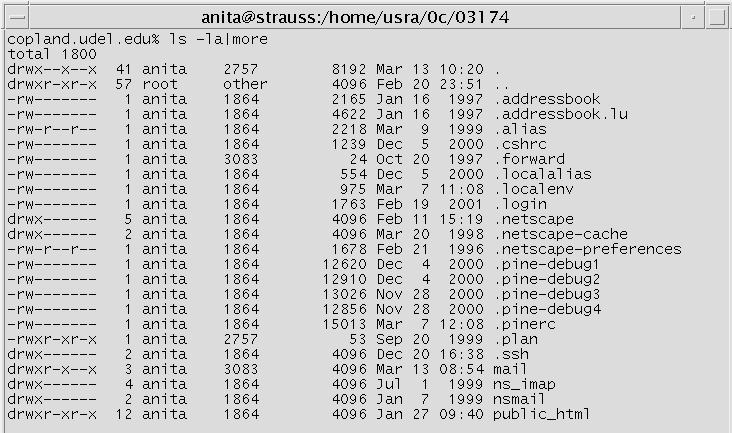

The cut command defines a custom separator (with the d option) that is equal to the colon character.įinally, we are isolating the first field of the results we are getting. The -l parameter provides several details.

We can also use the -l parameter to generate the long listing of files and directories: ls -l. When we execute this command, the files in the current directory are listed.

Next, those results are piped (using Linux pipes and redirection) to the cut command. The ls command stands for listing and can be used without any parameter: ls. You can specify the following actions for the list of files that the find command locates: -print. To achieve that, run the following command $ cat /etc/passwd | cut -d: -f1įirst, you are printing a list of all records in the passwd file. txt except the file notme.txt, use: -name notme.txt -name. In order to list usernames on Linux, use the “cat” command and pipe it to the “cut” command in order to isolate usernames available in the first column of your file. alias alias pd'pwd' The alias command allows you to create keyboard shortcuts, or aliases, for commonly used commands. When a session starts, it will load the contents of the bash profile before executing commands. List Usernames using the /etc/passwd fileĪs you probably noticed, the /etc/passwd file is made of lines separated by colons. /.bashprofile is the name of file used to store environment settings.
BASH LIST FILE DETAILS HOW TO
Now that you know how to list users on your Linux host, let’s see how you can effectively isolate a list of usernames.
BASH LIST FILE DETAILS PASSWORD
If you have any other Linux tips, questions, or doubts? do ask for help in the comments section.As a quick side note, an “x” in the password column means that the password is encrypted and it is to be found in the /etc/shadow file. You can also sort files by size in reverse order by using the -r option as shown. 1 root root 16K remi-release-7.rpmĭrwxrwxr-x 5 root root 4.0K fwbackups-1.43.7ĭrwxrwxr-x 15 root root 4.0K ImageMagick-7.0.8-28 If you want to find a file in some directory, use the command find /directory -name filename.extension. name filename.extensionThe above command will find all the files with the name filename.extension in the current directory. 1 root root 1.8M fwbackups-1.43.7.tar.bz2 You can run find command to find files by permissions, users, groups, file type, size etc.Syntax: find. In the following output, the largest files are shown in the beginning. To list the contents of the directory using grep command run the following command. List given directory size, directories, and files bash. ls Command The most useful of the two commands is ls, (at least in my opinion) which lists the file details. With this command, we can view the properties of files and directories such as size. a) Write a shell script to list all of the directory files in a directory. The command stat used to display file and file system information. To list or sort all the files by size, use the -S option, that tells the ls command to sort the file listing by size and the -h option makes the output a human-readable format. This command is used for searching text files using regular expressions. list number of files in each folder linux. # lsĪnaconda-ks.cfg bridge-nf-call-iptabley~ fwbackups-1.43.7 ImageMagick-7.0.8-28 remi-release-7.rpmīridge-nf-call-iptables~ bridge-nf-call-iptablez~ fwbackups-1.43.7.tar.bz2 report.xmlīridge-nf-call-iptablex~ caddy initial-setup-ks.cfg rh6_CloudBerryBackup.rpm When invoked without any arguments, ls lists the files in the current working directory. Releated Read: Fun: SL (Steam Locomotive) Runs a Train in Your Linux Terminal To list or sort all files in a directory by size, we will use the ls command, which will list computer files in Unix and Unix-like operating systems.


 0 kommentar(er)
0 kommentar(er)
